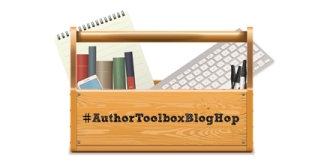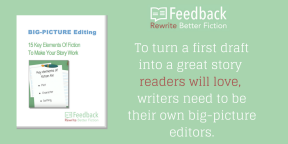 Thank you, Raimey Gallant for organizing the #AuthorToolboxBlogHop. Today is the 5th post of this new series!
Thank you, Raimey Gallant for organizing the #AuthorToolboxBlogHop. Today is the 5th post of this new series!
This is a monthly blog hop on the theme of resources/learning for authors: posts related to the craft of writing, editing, querying, marketing, publishing, blogging tips for authors, reviews of author-related products, anything that an author would find helpful.
To continue hopping through other great blogs in the monthly #AuthorToolboxBlogHop or to join, just hop on over to Ramey Gallant!
I’ll focus my entire series on self-editing. Here is what I’ve covered so far in the series:
- Why Learn To Self-Edit.
- Characters In The Context of Editing.
- Emotional Impact of Setting
- Opening A Scene
Today’s topic is PURPOSE OF A SCENE.
The first plot element I evaluate is the purpose of the scene. The purpose of the scene must relate to the overall story. If it’s not driving the story forward, then ask yourself what is the point of including the scene in your novel.
Here are some examples of the way the purpose of a scene can drive the story forward. You can choose one of these to define your purpose or come up with your own definitions.
- Build suspense
- Character development
- Character Introduction
- Climax
- Establish mood
- Establish setting
- Inciting Incident
- Intensify Conflict
- Move the story forward
- Plot point 1
- Plot point 2
- Resolution (after climax)
HOW PURPOSE OF A SCENE HELPS WITH THE OTHER ELEMENTS
I articulate the purpose of the scene first, so I can address other elements of the scene and test if they are in line with the purpose.
Let’s say you fill out the list of objects in a scene. You can weigh the objects against the purpose of the scene and see if there is a way to use them to further the purpose. This goes for revelations, tension, conflict, weather, etc. Basically, every scene element can be tested against the scene purpose.
After you whittle down the purpose of a scene to a few words, one of three things will happen.
- You’ve got the purpose nailed, and you understand why this scene is included in your novel.
- You have a weak purpose, but there is still some value in the scene.
- You have no idea what the purpose is.
So you’ve got the purpose nailed. Yay! Move on to the next scene.
If the point of the scene is weak, see if you can take what is important in a scene and move it to another scene, then delete the weak scene. You can also enhance the scene to give it a stronger purpose.
If you can’t articulate the purpose of a scene, think about removing the scene.
More Self-Editing Advice

If you’re looking for more help on self-editing download the free eBook, BIG-PICTURE Editing 15 Key Elements of Fiction To Make Your Story Work and learn how big-picture editing is all about evaluating the major components of your story. We call these components the Key Elements Of Fiction.
Our eBook shows you how to use the key elements of fiction to evaluate your story and become your own big-picture editor.
Interested In An Automated Approach To Big-Picture Self-Editing?
Why not try Fictionary?
A new online tool for serious fiction writers. Turn your first draft into a story reader love by becoming your own structural editor. Fictionary is the first web app to help fiction writers evaluate their own work with a focus on story, not words.
AVAILABLE FOR FREE TRIAL NOW!
With Fictionary, you can focus on plot, character, and setting. You can evaluate on a scene-by-scene basis or on the overall novel structure. Fictionary will show you the most important structural elements to work on first.
Fictionally will guide you through the rewriting process by asking you questions specific to your manuscript, enabling you to evaluate your own story.
Fictionally helps you visualize your manuscript. Forget about yellow stickies or white boards. Fictionary will draw character arcs, provide reports on scene evaluation, and show your rewriting progress.
Happy editing and thanks for reading…


I love the checklist 🙂 Thanks for sharing.
LikeLiked by 1 person
Checklists always help me keep organized. Have a great day writing.
LikeLiked by 1 person
Thanks for the checklist. Very helpful
LikeLiked by 1 person
Hi, M.L. Thanks for stopping by.
LikeLiked by 1 person
Some of the resources I’ve seen actually suggest that every scene should have a main purpose and a secondary purpose. For example, a scene shouldn’t just push the plot forward, it should also deepen your understanding of the characters or world.
LikeLiked by 1 person
HI Dianne, I believe that too. I usually start with a first purpose, then I feel like I have something. After that, I look for what the second purpose could be. It certainly does give depth.
LikeLike
Hi! Great advice. I swear by my outline as a means of helping me make sure each scene is somehow advancing the plot and also deepening the understanding of the characters (from the comment above)!
Leslie
LikeLiked by 1 person
An outline is great to use. It’s interesting how every writer seems to have their own way of getting through an edit.
LikeLiked by 1 person
Your list is very handy. Some of the items I hadn’t considered. Thanks for that.
Anna from elements of emaginette
LikeLiked by 1 person
I love this blog hop. I learn something every month.
LikeLiked by 1 person
Just spitballing here. There could be a name for the weighing objects/elements test. Is Purpose Test too obvious? Is this already a thing? 🙂
LikeLiked by 1 person
I haven’t heard the work spitballing in a while. Made me chuckle. I love this term purpose test as that’s really what I’m doing here. Don’t know if it’s already a thing…
LikeLike
I’m currently in the revision process focusing on plot this time around. Your post is quite helpful while I tackle whether or not each scene is important.
Thank you!
LikeLiked by 1 person
Hi JJ. Good luck with your revision!
LikeLiked by 1 person
Thanks! It’s the second round, and I already know I’ll need more rounds…
LikeLiked by 1 person
I have a real problem with seeing scenes as separate chunks, which is probably because I’m more of a Panster than Plotter? I revise for ‘getting where I need to get’ while hopefully maintaining story/character/etc. I do want to lean more towards the plotting / scene building technique so this is a huge help. I have also downloaded the free ebook. Thanks! X
LikeLiked by 1 person
Hi Shah, I hope the eBook is helpful. I don’t evaluate my scenes until after I have a first draft written. I’m a panster too, and love to write the story first.
LikeLike
Thank you for your fantastic post. I especially love the three categories of scene purpose 🙂 Have a lovely rest of your week Kristina 🙂
LikeLiked by 1 person
Thanks Erika 🙂 You too.
LikeLike
Appreciate the checklist and the thoughtful way every single element in a scene must support the purpose (ducking my head down in chagrin)….
LikeLiked by 1 person
Hi Louise, no chagrin required. We all work in different ways 🙂
LikeLike
Great checklist! Thanks for sharing 🙂
LikeLiked by 1 person
This was a nice twist of self-editing. Often when we self-edit, we think about commas or left out words. It’s not so much the scenes and their purpose. Usually I write scenes with the purpose of building suspense or building a character or that character’s relationship to another character. Going back through the manuscript to see if each scene has a purpose relative to your checklist would be quite an endeavor! But, surely worthwhile. Sigh…
LikeLiked by 1 person
This is an absolutely critical thing to learn! I’ve heard of a rule called the “Double Duty” rule, too, where you have to look at your scene and judge whether or not it is serving two or more purposes. If it’s only serving one or none, it’s too weak and it has to go!
LikeLiked by 1 person
Double duty is a great name for this. I hadn’t heard that before, but I’m going to use it in the future. Thanks,
LikeLike
Thanks for the checklist, Kristina. Like Mica and some of the others have mentioned, I try to ensure each of my scenes is working through more than one item on it, but it is absolutely critical a scene is at least dealing with one.
I do really like the concept of really honing your scene’s purpose into a short description. It sort of falls out from outlining, but I think there is significant value in concisely and clearly stating each scene’s purpose.
LikeLiked by 1 person
Sometimes it’s really hard to get the purpose down to 3 words or less, but I find it helpful in knowing if I truly understand what the purpose is. I’ve written scenes that i love, but don’t fit at all into my story. I usually cut them, but save them in hopes that I can use them in a different story.
LikeLike
Hello, Kristina! This is my first time here. I’ll follow your blog and connect with you online.
You’ve got excellent info here for writers. Each scene must be important in moving the story forward. There are many, many layers to crafting a story. Thanks for sharing a checklist!
http://victoriamarielees.blogspot.com
LikeLiked by 1 person
Hi Victoria, I’ve followed your facebook page and followed you on Google too. Great to connect.
LikeLike
I’ve definitely had a few moments of “I have literally no idea why this scene exists”. It’s surprisingly liberating to draw a giant red X through an entire chunk of dead weight!
LikeLiked by 1 person
Yup. I’ve used the giant red x too. Funny how good it feels.
LikeLike
An excellent checklist – simple, but to-the-point.
LikeLiked by 1 person
Thank you, Iola.
LikeLike
Your checklist helps newbie authors critically edit their works. I think after a while, and if you’re an avid reader, scene writing becomes more intuitive.
LikeLike
Thaks for sharing! Some good advice here for authors of all types.
LikeLiked by 1 person
Reblogged this on Author Don Massenzio.
LikeLiked by 1 person